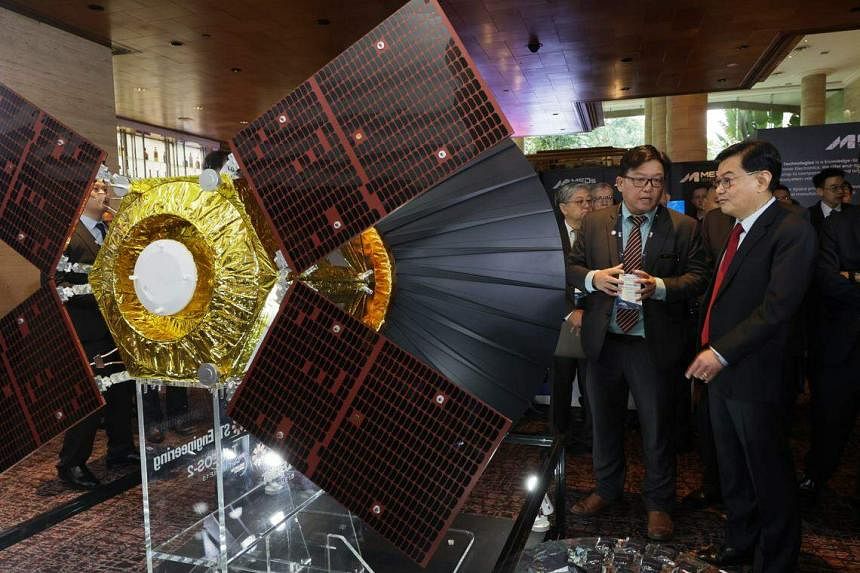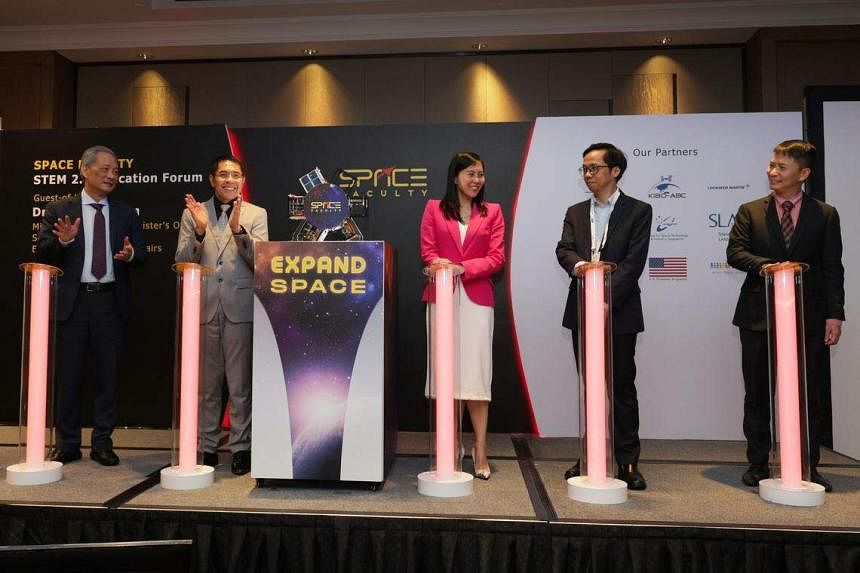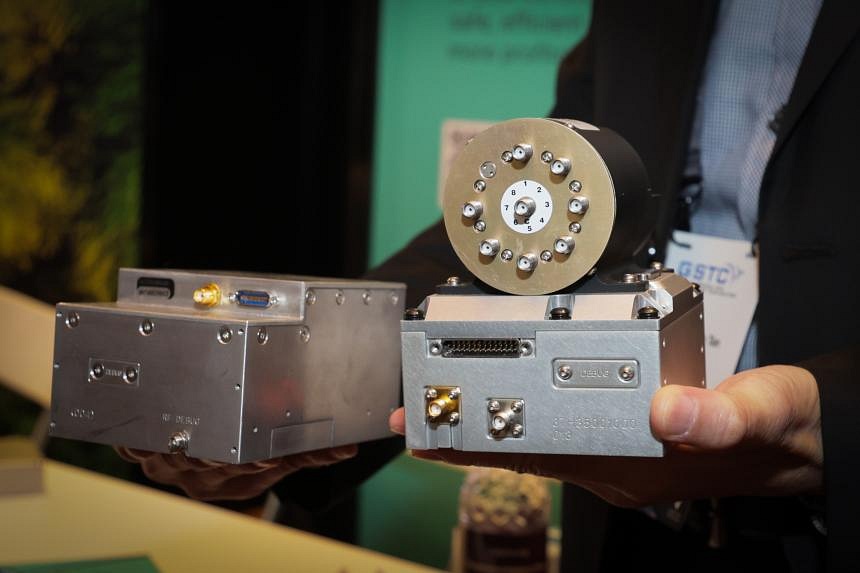SINGAPORE – Technology developed in Singapore will be part of the world’s first commercial manned space station that could be orbiting the earth by August 2025 at the earliest.
The metallic space equipment by home-grown firm Addvalue Technologies functions like a Wi-Fi network between the spacecraft and earth, allowing constant communication between the astronauts and ground operators.
More than a dozen satellite operators globally are customers of Addvalue, which also produces equipment such as communications systems for ships.
The deal with US aerospace company Vast, which is building the private space station called Haven-1, was announced on the sidelines of the Global Space and Technology Convention at Sheraton Towers Singapore on Feb 15.
Currently, most commercial satellites and spacecraft connect with earth for only about 4 per cent of their time in space, which makes it hard to respond to emergencies or gather timely data from the cosmos.
A space vehicle connects with earth when it flies directly over its ground station, and this happens every 90 minutes when it completes an orbit. Ground station operators only have 10 to 15 minutes to “talk” to the vehicle before it flies out of the radar, said Mr Tan Khai Pang, chief executive of Addvalue.
The lack of constant communication becomes a problem, especially, with humans in space and safety at stake.
Addvalue offered Vast its technology called the Inter-satellite Data Relay System (IDRS), which will allow Haven-1 and its occupants to be continuously in contact with earth. The IDRS terminal that will be fitted to the space station is a modest-looking metallic box that can be held in one hand and weighs only 1kg. Its cost, though, is in the six digits. Addvalue declined to provide details of its cost.
Illustrating the value of constant communication between people in space and on earth, Vast’s senior vice-president of product and business development David Caponio said: “At a conference last year, a vendor of an electron microscope asked me if I wanted to control the microscope using an iPad.
“I asked: ‘Where is the microscope? In your lab?’ He said: ‘No, it’s on the ISS right now.’”
The International Space Station (ISS) is one of only two space stations in orbit. It is run by five national space agencies, including the United States’ National Aeronautics and Space Administration. The Tiangong space station is run by China.
The ISS, alongside military satellites, tends to have its own communication technologies that are not commercialised.
The ISS is expected to retire by 2031, which means many private astronauts and companies are eyeing Haven-1, which is planned to be in orbit for three years to advance space science, enable research and provide opportunities for spaceflight. Vast plans to have four astronauts on board per mission.
Space stations serve as labs in outer space where life science research on new pharmaceuticals or in-space manufacturing is done, in microgravity environments. Since the ISS was launched in 1998, more than 3,000 experiments have been done in the spacecraft.
Mr Caponio added: “You can’t make things in the ISS and sell them very easily. But on a commercial space station, there are no restrictions to that.”

Addvalue’s role in the upcoming space station is an example of Singapore’s role in the global space scene. Singapore is not a space-faring nation, but its contribution lies in building high-tech components and small satellites, and leveraging space to support aviation, maritime, climate and telecommunications, among other sectors.
To help the authorities identify hijacked ships or illegal fishing activities, ST Engineering Geo-Insights developed a software platform called KnOcean that analyses vast ocean images captured by satellites.
Those ships or fishing vessels usually have their identification system turned off, which means only satellites can spot them, said Mr Goh Ing Nam, general manager of the joint venture company formed between DSO National Laboratories and ST Engineering.
Since 2011, Singapore has launched more than 30 satellites, nine of which were in 2023 alone. The country is home to more than 60 local and international space-tech companies, with a combined total of over 2,000 professionals and researchers.
Speaking at the convention, Deputy Prime Minister and Coordinating Minister for Economic Policies Heng Swee Keat said: “We must identify purposeful niches to pursue research and innovation in space technology. In particular, we must focus on opportunities that advance space technology in an impactful, responsible and accessible manner.”
Apart from identifying niches in the space sector, Mr Heng added that there is a need to build talent across domains to uplift the country’s overall space capabilities.

The convention was organised by non-profit Singapore Space and Technology Limited (SSTL).
Space Faculty, SSTL’s spin-off, is the main platform that offers opportunities for students and young people to learn about space, enter the sector and develop skills in science, technology, engineering and mathematics (Stem).
These are done through competitions such as the annual International Space Challenge, internships, and workshops on building satellites and understanding spacecraft.
To build on these programmes and nurture more talent for Singapore’s space industry, many of these initiatives for students and adults below 35 will be consolidated under a new entity called Expand Space, which was unveiled at Space Faculty’s Stem education forum on Feb 14.

This new platform will culminate in a yearly conference-like event for space and deep-tech enthusiasts. The first event will happen in November.
Milo Space Science Institute, led by Arizona State University, will conduct a 12-week course in March for university students and graduates here to understand how space missions and lunar explorations work.
Space Faculty also launched an internship programme in 2023 to expose tertiary students to local space firms. To date, about 40 students have done internships at companies such as Aliena, which builds satellite engines, and satellite communications firm Kymeta.
Correction note: In an earlier version of the story, we said that more than 1,000 satellite operators globally are customers of Addvalue. Addvalue Technologies has since clarified that it is more than a dozen satellite operators.


